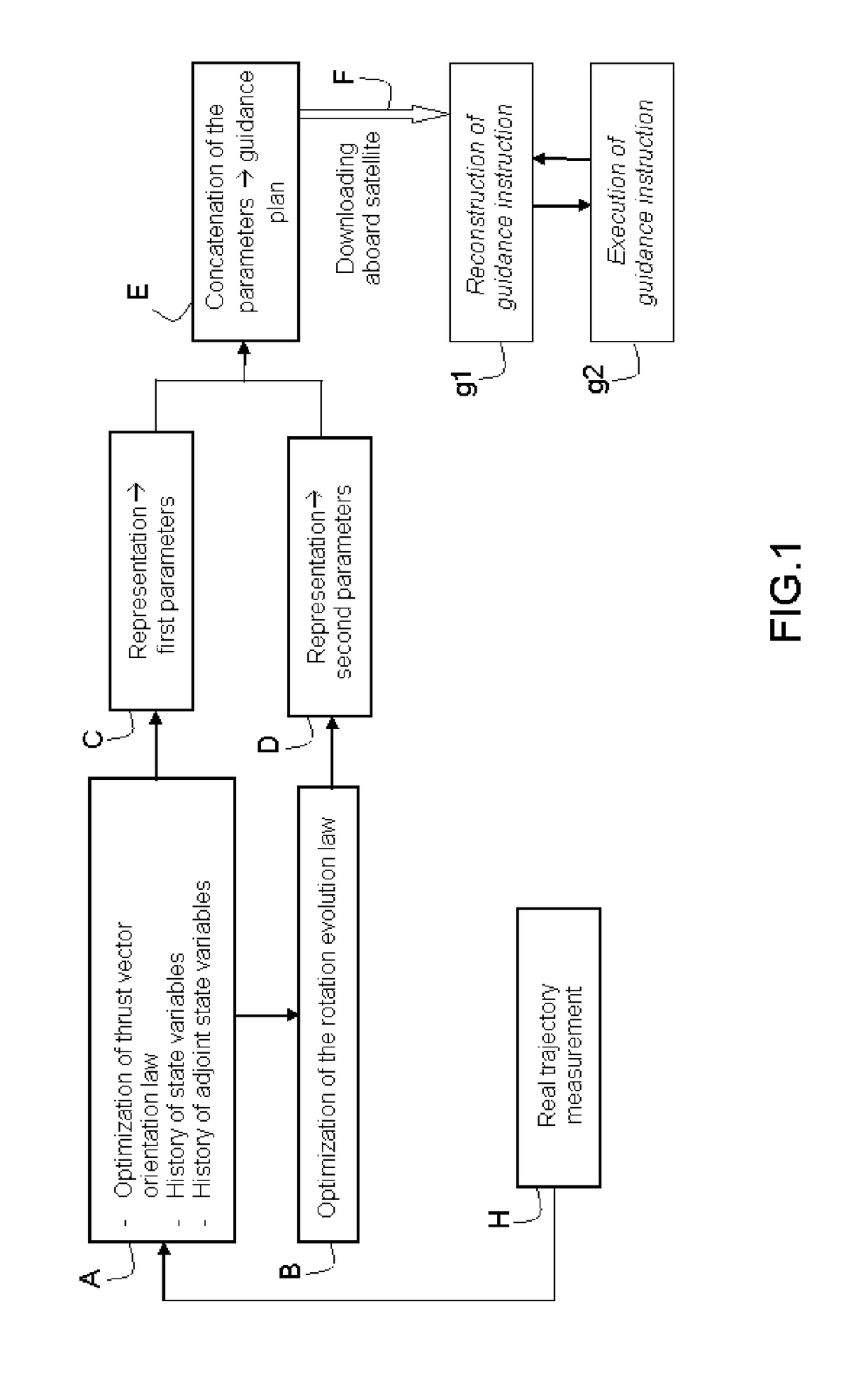Method of guidance for placing a satellite on station
a satellite and orbital transfer technology, applied in the field of methods, can solve the problems of reducing the time required for placement on the station or for orbital transfer by one to two orders of magnitude, affecting the accuracy of positioning and positioning, and reducing the use of high-thrust chemical motors, so as to reduce the time or fuel consumption, reduce the cost of implementation in memory and calculation, and reduce the effect of power consumption
- Summary
- Abstract
- Description
- Claims
- Application Information
AI Technical Summary
Benefits of technology
Problems solved by technology
Method used
Image
Examples
Embodiment Construction
[0036]The method according to the invention presupposes that the guidance trajectory is planned on the ground before the start of the low-thrust transfer. The first guidance plan is then downloaded onboard the satellite for application over a limited guidance horizon (for example 7 days). During the current cycle of the orbital transfer, the method makes it possible to simply calculate the guidance instruction onboard and to execute it in open-loop. The readjustment of the orbit is done on the ground. Next, a new ground planning of the guidance trajectory is carried out on the basis of the orbit measured until the target orbit. The new guidance plan is then downloaded to the satellite. The process stops after execution of the last guidance cycle.
[0037]The guidance method according to the invention is thus based on an iterative onboard-ground guidance loop (for a current cycle) which is summarized by the graph of FIG. 1 in which the steps carried out on the ground are indicated by st...
PUM
 Login to View More
Login to View More Abstract
Description
Claims
Application Information
 Login to View More
Login to View More - R&D
- Intellectual Property
- Life Sciences
- Materials
- Tech Scout
- Unparalleled Data Quality
- Higher Quality Content
- 60% Fewer Hallucinations
Browse by: Latest US Patents, China's latest patents, Technical Efficacy Thesaurus, Application Domain, Technology Topic, Popular Technical Reports.
© 2025 PatSnap. All rights reserved.Legal|Privacy policy|Modern Slavery Act Transparency Statement|Sitemap|About US| Contact US: help@patsnap.com



